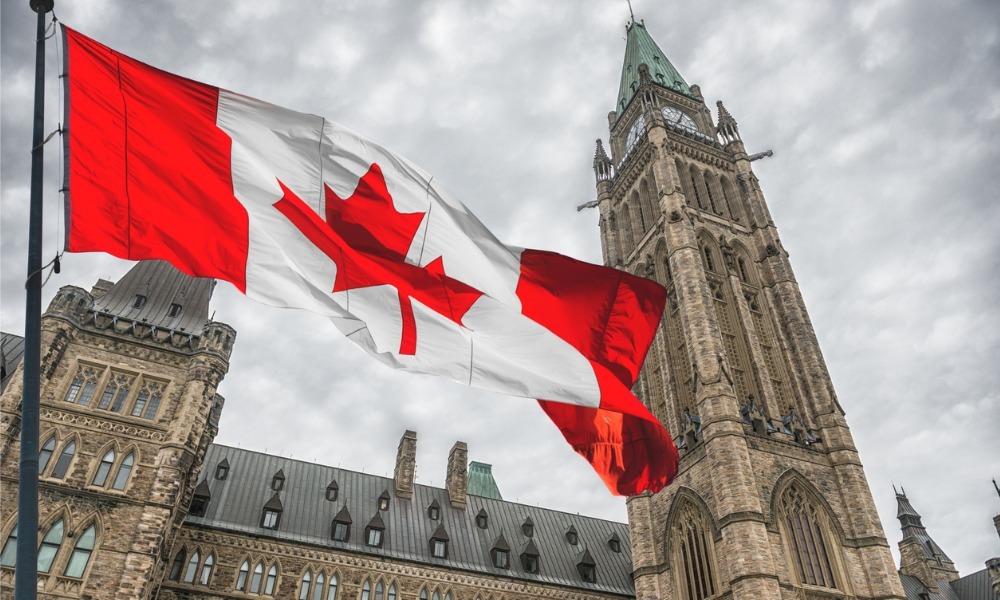-
Government debt relief programs in Canada:
-
Table of Contents
- Introduction
- Exploring the Different Types of Government Debt Relief Programs in Canada
- How to Qualify for Government Debt Relief Programs in Canada
- The Pros and Cons of Government Debt Relief Programs in Canada
- Understanding the Impact of Government Debt Relief Programs on Credit Scores
- Examining the Long-Term Benefits of Government Debt Relief Programs in Canada
- Conclusion
Lets Get Started
Government debt relief programs in Canada: The Canadian government offers a variety of debt relief programs to help individuals and businesses manage their debt. These programs are designed to provide financial assistance to those who are struggling to make payments on their debts. The programs are available to both individuals and businesses, and can provide a range of options to help manage debt. These options include debt consolidation, debt settlement, debt management plans, and debt relief grants. Each program has its own set of eligibility requirements and benefits, so it is important to understand the details of each program before applying. This overview will provide an overview of the various debt relief programs available in Canada.
Exploring the Different Types of Government Debt Relief Programs in Canada
Government debt relief programs in Canada are designed to help individuals and businesses manage their debt and improve their financial situation. These programs provide a variety of options for those struggling with debt, including debt consolidation, debt settlement, and debt management plans.
Debt consolidation is a popular option for those looking to reduce their debt. This type of program allows individuals to combine multiple debts into one loan with a lower interest rate. This can help reduce monthly payments and make it easier to manage debt.
Debt settlement is another option for those looking to reduce their debt. This type of program involves negotiating with creditors to reduce the amount of debt owed. This can be a good option for those who are unable to make payments on their debt.
Debt management plans are also available for those looking to manage their debt. These plans involve working with a credit counsellor to create a budget and payment plan. The credit counsellor will work with creditors to reduce interest rates and monthly payments.
In addition to these programs, the government also offers grants and loans to help individuals and businesses manage their debt. These grants and loans can be used to pay off debt or to start a business.
The government also offers tax relief programs for those who are struggling with debt. These programs can help reduce the amount of taxes owed and can provide additional funds to help pay off debt.
No matter what type of debt relief program you choose, it is important to understand the terms and conditions of the program before signing up. It is also important to make sure that you are able to make the payments on time and in full.
Government debt relief programs in Canada can be a great way to manage debt and improve your financial situation. It is important to research the different options available and find the one that best fits your needs.
How to Qualify for Government Debt Relief Programs in Canada
Debt relief programs in Canada are designed to help individuals and families who are struggling with debt. These programs can provide assistance with debt repayment, debt consolidation, and other forms of debt relief. To qualify for government debt relief programs in Canada, individuals must meet certain criteria.
First, individuals must demonstrate that they are unable to pay their debts. This can be done by providing evidence of income, expenses, and other financial information. Individuals must also demonstrate that they have made a good faith effort to pay their debts. This includes providing proof of payment attempts, such as cancelled cheques or bank statements.
Second, individuals must demonstrate that they are unable to pay their debts in full. This can be done by providing evidence of their total debt, total income, and total expenses. Individuals must also demonstrate that they have no other means of paying their debts, such as borrowing from family or friends.
Third, individuals must demonstrate that they are willing to work with a credit counsellor. Credit counsellors are professionals who can help individuals develop a plan to manage their debt. They can also provide advice on budgeting and debt repayment.
Finally, individuals must demonstrate that they are willing to make changes to their lifestyle in order to pay off their debts. This includes reducing expenses, increasing income, and making changes to their spending habits.
By meeting these criteria, individuals can qualify for government debt relief programs in Canada. These programs can provide assistance with debt repayment, debt consolidation, and other forms of debt relief. It is important to note that these programs are not a substitute for responsible financial management. Individuals should still strive to pay off their debts as quickly as possible.
The Pros and Cons of Government Debt Relief Programs in Canada
Government debt relief programs in Canada are designed to help individuals and businesses manage their debt and improve their financial situation. While these programs can be beneficial, there are also some potential drawbacks to consider.
Pros
One of the main advantages of government debt relief programs is that they can provide individuals and businesses with access to lower interest rates and more flexible repayment terms. This can make it easier to manage debt and reduce the amount of money that needs to be paid back. Additionally, these programs can provide access to financial counseling and other resources that can help individuals and businesses better manage their finances.
Another benefit of government debt relief programs is that they can help individuals and businesses avoid bankruptcy. Bankruptcy can have a long-term negative impact on an individual or business’s credit score, making it difficult to access credit in the future. Government debt relief programs can help individuals and businesses avoid this situation.
Cons
One of the potential drawbacks of government debt relief programs is that they can be difficult to qualify for. In order to be eligible, individuals and businesses must meet certain criteria, such as having a certain level of debt and income. Additionally, some programs may require individuals and businesses to provide collateral in order to qualify.
Another potential downside of government debt relief programs is that they can take a long time to process. This can be a problem for individuals and businesses who need immediate relief from their debt. Additionally, some programs may require individuals and businesses to pay a fee in order to participate, which can add to the cost of the program.
Overall, government debt relief programs can be a useful tool for individuals and businesses who are struggling with debt. However, it is important to consider the potential drawbacks before deciding if a program is right for you.
Understanding the Impact of Government Debt Relief Programs on Credit Scores
Government debt relief programs are designed to help individuals and families who are struggling to pay off their debts. These programs can provide a variety of benefits, including lower interest rates, reduced monthly payments, and even the elimination of some debts. However, it is important to understand the potential impact that these programs can have on an individual’s credit score.
When an individual enrolls in a debt relief program, their credit score may initially drop. This is because the program will likely involve the individual’s creditors agreeing to accept a reduced amount of payment. This can be seen as a negative event on the individual’s credit report, which can lead to a decrease in their credit score.
However, over time, the individual’s credit score can improve as they make regular payments on their debts. This is because the debt relief program will help the individual to become more financially responsible and to pay off their debts in a timely manner. As the individual’s credit score improves, they may be able to access better interest rates and more favorable terms on loans and other financial products.
It is important to note that debt relief programs are not a quick fix for an individual’s credit score. It can take time for the individual’s credit score to improve, and it is important to remain patient and consistent in making payments on their debts. Additionally, it is important to remember that debt relief programs are not a substitute for financial responsibility. Individuals should still strive to make responsible financial decisions and to pay off their debts in a timely manner.
In conclusion, debt relief programs can be a valuable tool for individuals who are struggling to pay off their debts. However, it is important to understand the potential impact that these programs can have on an individual’s credit score. With patience and consistency, individuals can use debt relief programs to improve their credit score and access better financial products.
Examining the Long-Term Benefits of Government Debt Relief Programs in Canada
The Canadian government has implemented a number of debt relief programs in recent years to help individuals and families manage their debt. These programs provide a range of benefits, including reduced interest rates, extended repayment periods, and even debt forgiveness. While the immediate effects of these programs are clear, it is important to consider the long-term benefits they can provide.
One of the most significant long-term benefits of government debt relief programs is improved financial stability. By reducing the amount of debt owed, individuals and families can free up more of their income for other expenses. This can help them to better manage their finances and avoid future debt problems. Additionally, debt relief programs can help to improve credit scores, which can make it easier to access credit in the future.
Another long-term benefit of government debt relief programs is improved mental health. Debt can be a major source of stress and anxiety, and reducing or eliminating debt can help to reduce these feelings. This can lead to improved overall wellbeing and quality of life.
Finally, government debt relief programs can help to reduce the burden on the public purse. By reducing the amount of debt owed, the government can save money on interest payments and other costs associated with debt collection. This can help to free up resources for other public services.
In conclusion, government debt relief programs can provide a range of long-term benefits, including improved financial stability, improved mental health, and reduced public expenditure. These programs can be an effective way to help individuals and families manage their debt and improve their overall wellbeing.
Conclusion
Overall, government debt relief programs in Canada provide a range of options for individuals and businesses to manage their debt. These programs can help individuals and businesses reduce their debt, make payments more manageable, and even eliminate debt altogether. While these programs can be beneficial, it is important to understand the terms and conditions of each program before applying. Additionally, it is important to remember that debt relief programs are not a substitute for responsible financial management.








